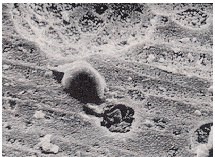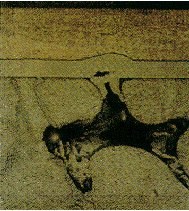Developments in Aluminum Wheel Plating
Plating aluminum wheels as well as getting the "look" of aluminum has changed...
Since the days of hot rods, crewcuts and "a little dab will do ya" there has been a modest company, centered in Los Angeles, chromium plating automotive wheels. It plated steel wheels, wire wheels and later aluminum wheels, which were typically obtained by stripping the organic coating from OEM (original equipment manufacturer) wheels. Quality was good enough for Southern California. The occasional wheels driven into the snow belt were expected to fail in a year or two, especially if they were aluminum. A limited, if any, warranty was offered on these wheels.
With the disappearance of bright trim on cars, some new car dealers started offering these aftermarket chromium-plated wheels as a way to differentiate their cars. Chromium plated wheels offered drive-by appeal to an automobile. When this happened with upscale cars, auto manufacturers took notice. They became concerned about the liability their cars would have if these aftermarket plated wheels supplied by their OEM dealers failed. And maybe more importantly, the auto manufacturers were not participating in the added margins their dealers made from these wheels. In some cases, the dealers made more from the optional plated wheels than from the car itself.
Cadillac and later Lincoln, in conjunction with innovative plating companies, took the early lead in warranty and quality specifications for plated aluminum wheels. About five years ago these efforts sparked the current surge in demand for this bright trim item. Of course, they did have some hints from the decade before when chromium-plated bumpers, grilles and steel wheels became a consumer-driven standard of light truck and van styling.
Demand worldwide for plated aluminum wheels has grown from about 1,000 to 2,000 a day in 1992 to currently about 11,000 to 13,000 a day. More importantly, the demand is now predominantly from the OEMs, which has meant raising quality standards and warranties. There has even been an increase in some aftermarket demand and quality driven by the OEM activity.
Within the last few years, similar but different specifications for plated aluminum wheels have been issued by GM, Ford, Chrysler, Mazda, Honda, Toyota and other automobile manufacturers. Even one of the luxury European car makers will have a special U.S. Edition car with plated aluminum wheels in 1998. Plated aluminum wheels have not yet become popular in Europe and Asia.
To help insure quality plating, the focus is on testing for blistering; adhesion failure; ductility; metal thickness; STEP value; corrosion resistance (CASS or cyclic); proving ground (actual and simulated); and appearance, particularly in low-current-density areas.
As specifications, testing and quality issues were developed, the aluminum preplate, including a thick electrodeposit of acid copper, was identified as the most critical step. Nickel and chromium electrodeposit specifications for other exterior automotive bright work were used for plating aluminum wheels once the preplate was established and completed correctly.
The preplate cycle for cast A356 aluminum alloy is based on three things:
- Power spray cleaning to remove polishing compounds from the mechanically polished cast aluminum wheel to reduce porosity and obtain the desired appearance.
- Soak cleaning to remove shop and handling dirt prior to etching to obtain a uniformly etched surface to enhance adhesion.
- Zincating to protect the active aluminum surface before subsequent copper electroplating and copper buffing.
These steps must be accomplished while balancing the requirement for maximum adhesion with minimal disturbance of the aluminum surface. This improves appearance while minimizing visible porosity.
A 100x top view of a polished wheel after cleaning, illustrates the presence of pits even after the proper amount of mechanical polishing. In most cases, increased polishing will increase porosity by exposing more sub-surface porosity. A 3,000x magnification shows polishing lines and silicon particles (white appearing nodules) penetrating the surface.
After etching, deep and shallow polishing lines along with pitting and preferential etching around silicon particles are easily seen at 3,000x. At this point, the aluminum surface is very active due to the removal of a layer of aluminum oxide. Because aluminum is a very reactive metal, exposed aluminum metal forms aluminum oxide almost immediately when exposed to oxygen.
The activated aluminum surface is protected from oxidation by a zincate treatment followed by a second zincate. There is a difference in the appearance and physical structure of a single and double zincate. The second zincate is harder and honeycombed compared to the first zincate. This gives a strong surface with a high surface area for enhanced adhesion of the subsequent nickel strike and copper electrodeposit. Since the silicon particles (protrusions) are not zincated, maximum adhesion is obtained only when they are bridged over by the nickel strike. A properly applied nickel strike will fill in and anchor into the pores in the aluminum surface. The copper deposit then levels out the surface to obtain the required surface appearance. If deep surface pits are present, such as in low-pressure aluminum castings, the copper deposit is buffed to cover over the pits which smooths the surface and further enhances surface appearance. High-pressure aluminum castings frequently do not require copper buffing.
Major efforts are being made to eliminate copper buffing and thus the expense. New preplate and plating processes are being designed to accomplish this. In parallel, there is an effort underway to improve the aluminum casting techniques for plating. Clearly, reducing the porosity of the aluminum surface skin is critical in order to meet the needed quality standards for both appearance and performance.
Pits have a detrimental effect on appearance, adhesion and corrosion. The use of virgin A356 aluminum is now standard for cast aluminum wheels. Some manufacturers specify high-pressure castings to minimize porosity. Of course, the higher the pressure used, the less complicated the injection mold can be. This is part of the inevitable conflict between designers and manufacturing engineers.
Today, platers are able to consistently finish properly cast aluminum wheels that meet the OEMs' requirements. This includes meeting 66 to 88 hrs of CASS (with ASTM rating of 10). Because of this, a typical OEM's warranty is four years or 50,000 miles. With this accomplished, automotive makers have turned to issues of increased styling flexibility and reduced cost.
Styling flexibility means more visible deep recesses in the wheel, cut throughways or windows and decorative holes for bolts and tire stems. The desire for these features has led to the development of higher-throwing-power acid coppers and the increased use of auxiliary anodes for nickel and chromium electroplating. Auxiliary anodes improve the appearance and the corrosion resistance by increasing the thickness of nickel in the
low-current-density areas. The anodes would also quickly destroy nickel plating solutions that were not developed specifically for use with auxiliaries.
To reduce costs, some plated aluminum wheel centers are placed over organically coated aluminum or plated steel wheels to give the appearance of plated aluminum wheels. The wheel centers are made from a tougher (higher silicon and copper) alloy which has prompted additional development of metallizing technology.
The requirement for reduced costs has lead to several alternatives that still offer the appearance of a plated aluminum wheel. One is the increased use of plated steel wheels, especially for light trucks. Another is the use of plated stainless steel skins glued to painted steel wheels. This reduces costs by about 10 pct but decreases design flexibility.
Early production work on these wheels with skins focused on making a water-tight seal between the skin and the wheel. Open areas lead to the potential of trapping corrosive material, resulting in rusting from inside with a bleed-out of rust onto a significant surface. Rust marks were also created where the skin scratched off the paint while it was adhered to the wheel. Another major alternative is plated plastic hubcaps, now called wheel disks.
With the increased demand for a plated aluminum wheel, the requirement for reduced costs and shortage of platers able to plate OEM quality aluminum wheels, several trends have been noticed.
- There is an increase in demand as the styling trend moves to middle and lower priced cars. Demand is growing 15 to 20 pct per year. At least six new plating lines are being engineered or built in Southern California alone, with a capacity for about 3,000 to 4,000 aluminum wheels per day. Increased capacity is also growing worldwide; however, the wheels are mostly for the North American market.
- Environmentally friendlier processes are being developed: Non-cyanide metal zincate to match the performance of the older cyanide-based systems; Nitric acid elimination between double zincate; Elimination of strong and hazardous mineral acid mixtures like "tiger juice"; Controlling nitric acid desmuts to eliminate brown fumes, exothermic reactions and odors; and Eliminating electroless nickel systems with their slow speed, high cost and waste disposal problems.
- Shifts in casting technology are continuing to produce more platable aluminum wheels. This includes increased interest in gravity casting to replace low-pressure casting; better mold maintenance; better mold lining materials for longer and consistent mold life; and selecting only platable wheels from a cast run (others being organically coated).
- Manufacture of plated wheel disks from more flexible engineered plastics with a complementary improvement in plating.
- Growth in plated steel wheels as a low-cost alternative, especially for light trucks.
- Vacuum, CVD or PVD coatings on an organically coated surface with chromium or indium followed by another layer of organics. If the thin metallic coating is applied as many small "islands," then the coating can be applied to a flexible substrate. The major disadvantage with this method has been the loss of gloss and color due to scratching, aging and normal wear as the organic topcoat ages.
Consumer demand for plated aluminum wheels is increasing and technical breakthroughs are improving their performance and reducing costs. This is an excellent example of platers, designers and manufacturers and suppliers worked together to meet a fast changing styling requirement.
Related Content
Trivalent Chrome Overview
As the finishing industry begins to move away from the use of hexavalent chromium to trivalent chromium, what factors should finishers consider as they make new investments? Mark Schario, chief technology officer for Columbia Chemical offers a helpful overview of this complicated topic.
Read MoreInnovation in Plating on Plastic
Plating on advanced plastics solution offers improved adhesion, temperature resistance and cost savings.
Read MoreHow to Choose Between Sulfate and Chloride-Based Trivalent Chromium
There are several factors to consider when choosing between sulfate and chloride-based baths for trivalent chromium plating. Mark Schario of Columbia Chemical discusses the differences and what platers should keep in mind when evaluating options.
Read MoreSuccessful South African Plater Beating the Odds
Remaining focused on quality and reliability, Team Plating Works stays profitable in a volatile and challenging economy.
Read MoreRead Next
A ‘Clean’ Agenda Offers Unique Presentations in Chicago
The 2024 Parts Cleaning Conference, co-located with the International Manufacturing Technology Show, includes presentations by several speakers who are new to the conference and topics that have not been covered in past editions of this event.
Read MoreEpisode 45: An Interview with Chandler Mancuso, MacDermid Envio Solutions
Chandler Mancuso, technical director with MacDermid Envio discusses updating your wastewater treatment system and implementing materials recycling solutions to increase efficiencies, control costs and reduce environmental impact.
Read MoreEducation Bringing Cleaning to Machining
Debuting new speakers and cleaning technology content during this half-day workshop co-located with IMTS 2024.
Read More
























